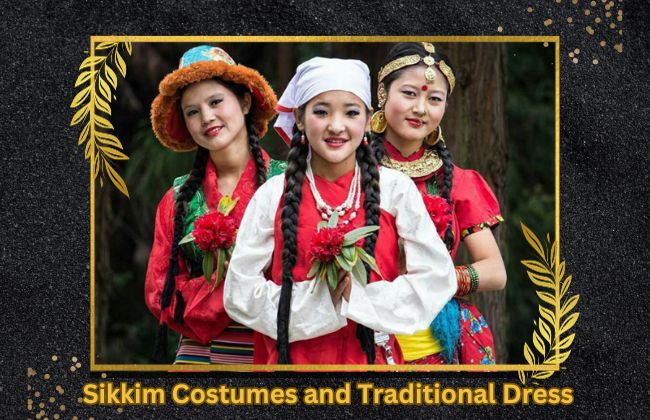Sikkim Costumes and Traditional Dress: Embracing Culture through Attire
Introduction
Sikkim, nestled in the lap of the Himalayas, boasts a vibrant Sikkim Costumes and Traditional Dress cultural tapestry reflected eloquently in its traditional attire. From the ornate to the practical, Sikkimese costumes carry stories of heritage and identity.
Sikkim Traditional Costumes:
1. Bakhu: Pride in Simplicity
-
The Bakhu, the quintessential Sikkimese dress, exudes elegance in its simplicity.
-
This traditional attire consists of a wraparound garment fastened at the shoulders with intricate knots.
-
The Bakhu is often complemented with a colorful silk or cotton blouse.
2. Kho: Symbol of Grace
-
The Kho, worn by Sikkimese women, is a long, pleated skirt, vibrant with hues and patterns.
-
It's paired with a beautifully embroidered, full-sleeved blouse, adding grace and charm.
3. Patuka: A Touch of Tradition
-
Men adorn the Patuka, a cloth belt, usually worn with the Bakhu, showcasing traditional weaving patterns.
-
It's not just an accessory; it's a symbol of cultural pride.
Colors and Symbolism:
-
Red: Symbolizes courage and strength, often found in intricate patterns.
-
Green: Represents fertility and harmony, seen in various elements of the attire.
-
Yellow: Signifies prosperity and is commonly used in embroidery and detailing.
Evolution of Sikkimese Attire:
-
Over time, modern influences have seeped into traditional wear, adapting to contemporary preferences while preserving cultural roots.
-
Introduction of lighter fabrics and fusion designs has added versatility without compromising authenticity.
Importance in Festivities:
-
Festivals like Losar and Pang Lhabsol witness a beautiful array of Sikkimese costumes, showcasing the richness of culture and tradition.
-
Attire plays a pivotal role in preserving and celebrating the heritage during these festivities.
Conclusion: Sikkim Costumes and Traditional Dress
Sikkim Costumes and Traditional Dress dress isn't just clothing; it's a vibrant tapestry that weaves together stories, symbolism, and identity. Embracing these attributes means embracing a cultural heritage that transcends time, fostering a sense of pride and belonging among the people of Sikkim.



